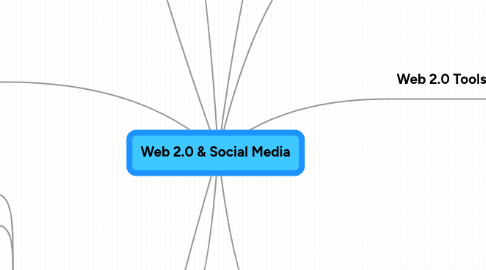Web 2.0 & Social Media
by Andrew Hoffman


1. Why Contribute?
1.1. It's your opportunity to voice your expertise
1.2. It's primarily free
1.3. It's the current avenue that the majority receives their information
1.4. It's revolutionizing communication
1.5. You can't NOT begin using it
1.6. It multiplies connections
1.7. It supplements & sometimes replaces face to face interaction
1.8. You control the content
1.9. Mobile content & users are growing rapidly
1.10. Everything Is Immediate - faster than any communication tools ever before it.
2. Why Non-Profits Should Use It
2.1. It's FREE Communication
2.2. It's free tools that help facilitate our activities
2.3. We can expand our reach
2.4. Advocate & Increase donations
2.5. Why not?
3. Social Media Outlets
3.1. Facebook
3.1.1. www.facebook.com
3.2. Twitter
3.2.1. www.twitter.com
3.3. Blogging
3.3.1. www.blogger.com
3.3.2. www.tumblr.com
3.3.3. www.wordpress.com
3.4. FriendFeed
3.4.1. www.friendfeed.com
3.5. MySpace
3.5.1. www.myspace.com
3.6. Endless News Sources
4. What is Web 2.0?
4.1. "Web 2.0" refers to what is perceived as a second generation of web development and web design. It is characterized as facilitating communication, information sharing, interoperability, user-centered design[1] and collaboration on the World Wide Web. It has led to the development and evolution of web-based communities, hosted services, and web applications. Examples include social-networking sites, video-sharing sites, wikis, blogs, mashups and folksonomies. http://en.wikipedia.org/wiki/Web_2.0
5. Pressing Issues
5.1. People create for the sake of creating
5.2. never-ending content
5.3. Navigation of content
5.4. Quality of data & sources
5.5. Keeping up with technology & all of it
5.6. It's changing faster than people can adapt
6. What Is Social Media?
6.1. Social media is online content created by people using highly accessible and scalable publishing technologies. Social media is a shift in how people discover, read and share news, information and content; it's a fusion of sociology and technology, transforming monologues (one to many) into dialogues (many to many) and is the democratization of information, transforming people from content readers into publishers. Social media has become extremely popular because it allows people to connect in the online world to form relationships for personal, political and business use. Businesses also refer to social media as user-generated content (UGC) or consumer-generated media (CGM). http://en.wikipedia.org/wiki/Social_media
7. Web 2.0 Tools
7.1. Web browser add-ons
7.2. Anything Google: docs, maps, etc.
7.3. Whrrl
7.3.1. www.whrrl.com
7.4. Mind Mapping - www.mindmeister.com
7.5. Video Sites
7.5.1. www.youtube.com
7.5.2. www.vimeo.com
7.6. SlideShare
7.6.1. http://www.slideshare.net/
7.7. Volunteer Spot - Free online volunteer organization tool
7.7.1. http://www.volunteerspot.com/
7.8. Photo Sharing
7.8.1. Flickr
7.8.2. Shutterfly
7.9. Verifiable - online data mapping system
7.9.1. http://verifiable.com/welcome?id=10
7.10. SquareSpace Website Building tool
7.10.1. http://www.squarespace.com/
7.11. The Extraodinaries - Micro Volunteering - phone based
7.11.1. http://www.theextraordinaries.org/
8. Online Social Media Resources
8.1. TED
8.1.1. http://www.ted.com/
8.2. Mashable
8.2.1. www.mashable.com
8.3. Change.org
8.3.1. http://www.change.org/
